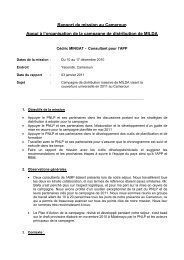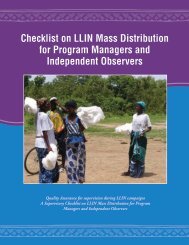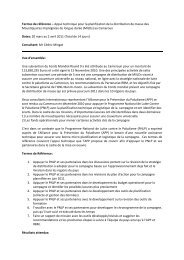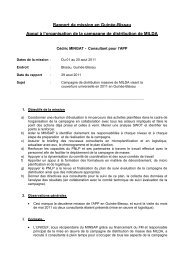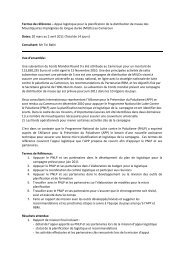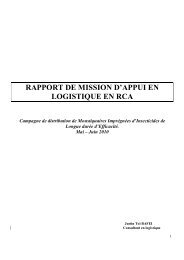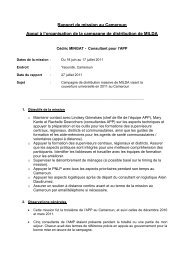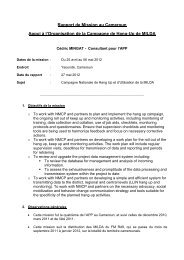Spots - Roll Back Malaria
Spots - Roll Back Malaria
Spots - Roll Back Malaria
- No tags were found...
Create successful ePaper yourself
Turn your PDF publications into a flip-book with our unique Google optimized e-Paper software.
STEP 5: PRE-PRODUCTION, PRODUCTION AND POST-PRODUCTIONmicrophone but not below or behind. They are ideal for placing close to onesound source (for example, a solo performer, an in-studio voice-over or a fieldinterview).• Bidirectional mics receive sound from two sides of the microphone but rejectsounds from the other two sides. A bidirectional mic can be placed between twopeople talking or singing.Using soundSound effects are sounds other than voices or music that are used to help create anillusion or picture in the listener's mind. They are either natural or artificial. Whenyou develop the script, you must decide which sound effects, if any, will help thelistener understand who and where the characters are or where the action in thespot takes place.• Natural sound effects are sounds that are recorded live at the location where theaction originates. For example, the natural (recorded) sounds of babies crying andpeople talking quietly in the background can create the impression that a motheris at a health center. Listen carefully, decide which of the natural sounds aredesirable and should be recorded live or accessed through a library of prerecordedsounds. A note of caution: Usually, natural sound must be recorded separatelyfrom any interview or narration. It is difficult to isolate and record good quality,individual natural sound effects. Poorly recorded sound effects can do yourmessage more harm than good.• Prerecorded sound effects: Many radio stations have collections of sound effectson records or tapes or CDs from which you can select appropriate sounds.• In-studio, manually created sound effects: If on-location or prerecorded soundsare not available, try creating them manually in the studio. Many commonbackground scenes may call for a combination of ordinary sounds. For instance,the interior of a restaurant usually involves the sounds of dishes, glassware andbackground conversation. Record the sounds of props being manipulated in thestudio to capture a sense of a place then mix into your spot later.Calculating the time to produce your spotIf you put all the elements together during your pre-production phase—script,casting, music, sound effects, rehearsal—and you are working with experiencedstudio staff and actors, the production of your spot will be the shortest phase of theproject. Allow up to two hours in the studio to produce one 60-second spot withone or two voices, music and effects. Most studios charge by the hour, so the betteryour preparation, the lower the production cost.74 Spot On <strong>Malaria</strong>: Guide




